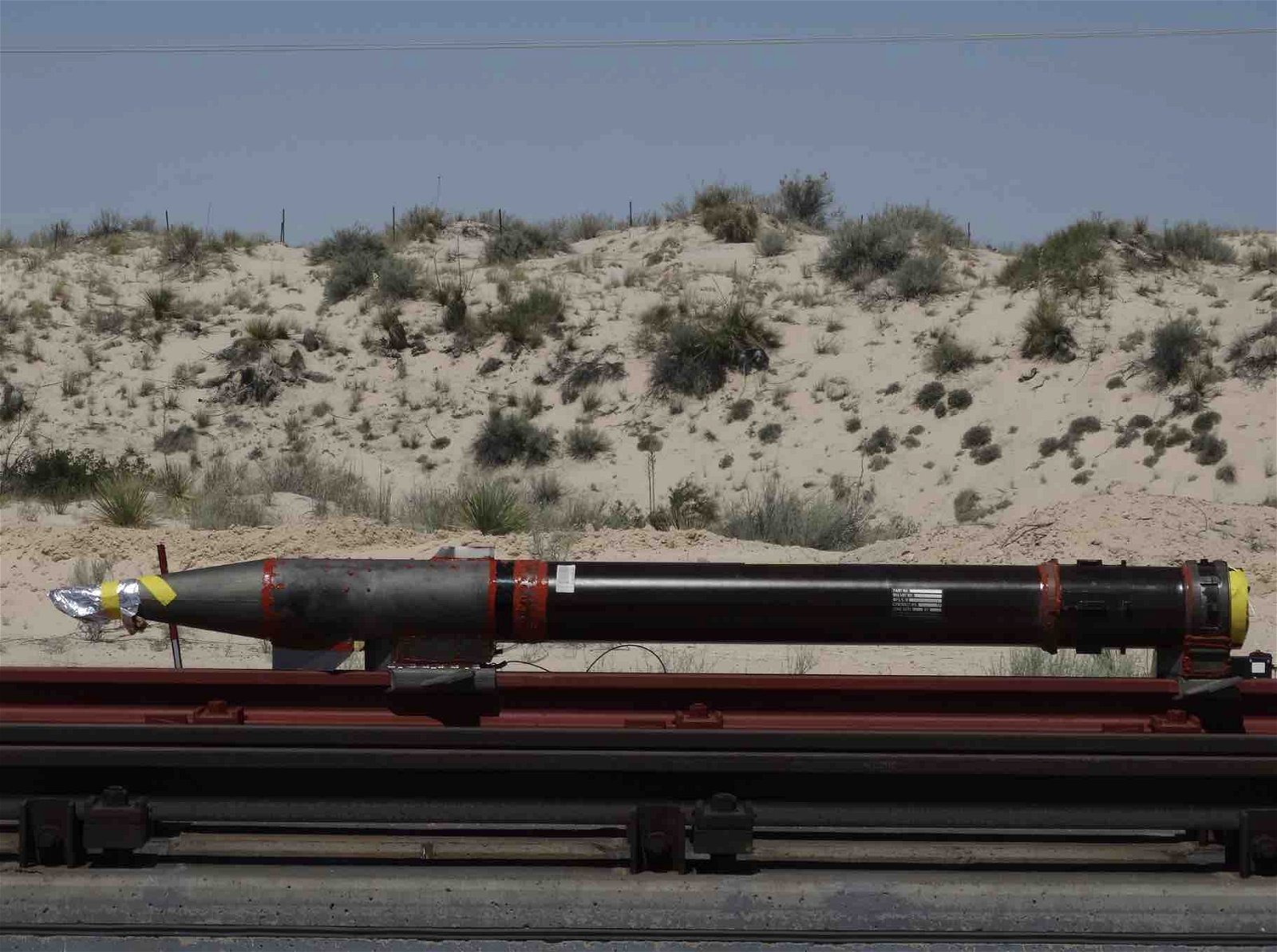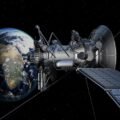The U.S. Air Force is building new customized rocket motors and associated testing platforms, including a series of high-speed test tracks that will be used to test advanced weapons.
Dubbed the Joint Economical Sled Track Rocket (JESTR) project, the Air Force says the new rockets and test facility will be “purpose-built” for testing of high-powered missiles and other advanced weapons systems that require short burn times and must operate under structurally stable sled track conditions.
US Air Force is Ready to Replace Cold War Era Technology
When the Air Force and its contractors want to develop new rocket and missile technologies, they typically go through three stages. The first is development and design, which mostly occurs in a lab setting. The second is on-the-ground testing on a rocket sled, and the third is real-world in-flight tests.
Currently, the middle stage involves using rocket motors that can handle the short burn times required to achieve relatively high speeds on a stable test track, more commonly known as a sled. However, those motors are repurposed from Cold War-era missiles, meaning the Air Force is using outdated equipment with limited capabilities to test highly sophisticated future weapons. There is also a limited supply of these antiquated rockets, making the need for a replacement increasingly urgent.
To address these issues, the Air Force is launching the project they call JESTR. And based on the goals of the program and its director, the 21st-century rocket and test platform will be no laughing matter.
New Age Weapons Require New Age Rockets
“One of the problems we were running into was being able to use some of the legacy sleds here at the Holloman High-Speed Test Track (HSTT) and fitting the new motors to all those various sleds,” explains Desiree Craig, the deputy project director for JESTR and flight chief for program management in the 704th Test Support Squadron.


The issue came down to the fact that the older rocket motors were never designed to operate on a sled testbed, so the sleds were custom-built to accommodate the older rocket motors. This is far from ideal from an engineering standpoint and has, at times, limited testing efforts. JESTR set out to change that by not only building new motors but an entirely new sled platform.
“The program was initially focused on only developing four rocket motors for production, but to execute an actual test, it requires motors and sleds,” said Craig. “We had to change how we looked at this program, from just motors to delivering the total capability.”
That change in approach was critical, the team leader notes, and one that allowed for a whole new approach to planning and development.
“When describing our requirements, we were able to design the motor to the sled track testing instead of the other way around,” said Bryan Sinkovec, JESTR project director at the HSTT, which is housed at Holloman Air Force Base in New Mexico. “That was new and exciting. We’ve always had to design our tests around the motors.”
At present, the JESTR team is developing multiple sled track motors. They include a small version, a medium version, a large version, and a “high performance” fourth option.
Tests of New Rockets and Track are Ready to Launch
For the upcoming series of tests, the Air Force will examine three distinct scenarios. They include a hypersonic impact scenario, a hypersonic rain erosion scenario, and a supersonic munitions scenario. A fourth scenario, called a “transonic impact” scenario, will be tested at China Lake.
China Lake is one of three such facilities operated by the Department of Defense. Another high-speed test track facility is housed at Elgin Air Force Base in Florida, while the newly constructed test tracks for these new JESTR rockets are being built at the HSTT at Holloman Air Force Base in New Mexico (Note: There is also a track at Sandia National Laboratories in New Mexico as well as another in Utah, but those facilities are not operated by the DOD).
The U.S. Air Force says that HSTT can achieve the fastest speeds among any of the five tracks, making it the perfect place to test out JESTR.
“At 50,000-plus feet, the Holloman High-Speed Test Track is the longest and most versatile sled track, to our understanding, in the world.” Said Sinkovec.
Christopher Plain is a Science Fiction and Fantasy novelist and Head Science Writer at The Debrief. Follow and connect with him on Twitter, learn about his books at plainfiction.com, or email him directly at christopher@thedebrief.org.

